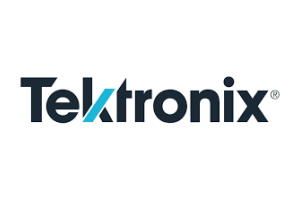Nvidia GTC in Washington
Medical AI Between Computing Power and Politics
At the fall GTC in Washington, Nvidia CEO Jensen Huang presented an AI strategy that will also shape the healthcare industry. The announcements range from the largest AI infrastructure for Big Pharma to open models for drug discovery to physical AI for medical robotics.
Anyone who has followed Nvidia and Jensen Huang's approach to managing the company he co-founded in 1993 over the past few years probably felt a bit different at the end of the GTC keynote in Washington: The CEO of what is arguably the most important semiconductor supplier for artificial intelligence, who immigrated from Taiwan with his parents, is doing everything he can to lead the global corporation and his legacy into the future beyond Trump's term in office. The fact that Huang ended his keynote speech after about 100 minutes with Trump's campaign slogan »Make America Great Again« shows that this is not just about technology, but about market power and national industrial policy. As he leaves the stage with his gaze slightly lowered, it is difficult to blame the otherwise likeable entrepreneur.
But to talk about technology: What AI news was presented at the fall GTC for healthcare? The short answer to this question is »AI for pharmaceuticals and medical robotics«. It's no secret that AI is becoming increasingly prevalent in pharmaceutical research: The technology analyzes large amounts of biological and chemical data to identify drug candidates that are difficult to discover using conventional methods. Contrary to the initial hype about "disruption," this change is happening more as a gradual integration into established development processes—validating AI-supported developments in clinical trials takes time, but it is certainly promising.
Eli Lilly's mega GPU clusterc
Eli Lilly's GTC example illustrates a major step toward this AI-based research. The pharmaceutical giant has launched what it claims to be the world's largest and most powerful AI factory, operated entirely by a pharmaceutical company. The system has – without exaggeration – gigantic computing power. It is based on the first Nvidia DGX SuperPOD with DGX B300 systems and is equipped with 1,016 Nvidia Blackwell Ultra GPUs. With over 9,000 petaflops of computing power, the system can perform more than nine trillion mathematical operations per second.
That sounds spectacular—and it is. The system was presented at the GTC as a beacon for the pharmaceutical industry: The AI factory is designed to compress timelines in drug discovery and enable breakthroughs in genomics, personalized medicine, and molecular design on an industrial scale. Thomas Fuchs, Chief AI Officer at Lilly, explains: "Our foundation models open up new possibilities for our chemists and help them discover new motifs and configurations of atoms that were unattainable with traditional methods." Initially, this is a scientific hypothesis for which validation data and measurable breakthroughs are still pending.
Eli Lilly is using Nvidia's full-stack architecture with Spectrum-X Ethernet networking and optimized AI software to create a secure and scalable platform for the highly regulated healthcare and life sciences industry. Mission Control enables Lilly to manage its DGX SuperPOD, orchestrate workloads, and automate AI operations across more than 1,000 GPUs. So far, the technology show has not mentioned energy consumption, the actual investment costs, or the question of how dependent the pharmaceutical company will become on a single provider in its AI strategy, or how dependent it wants to be for reasons of national security.
Open models against vendor lock-in
To avoid dependence on a single provider or infrastructure, models that can be used without proprietary hardware are important. Here, too, Nvidia is stepping up its game in Washington and expanding its Clara model series with three new open models for accelerated scientific discovery. Clara CodonFM learns the rules of RNA to show how changes in genetic code can improve the design of therapies and drugs. The model was developed in collaboration with the Arc Institute and is used by companies such as Therna Biosciences, Greenstone Biosciences, and the Stanford RNA Medicine Program.
Clara La-Proteina creates 3D protein structures atom by atom at twice the length and speed of previous models, enabling the development of better drugs, enzymes, and materials. The third new model, Clara Reason, is a vision-language model that enables chain-of-thought reasoning for radiology and medical imaging, advancing explainable AI in medical research.
Nvidia researchers have collaborated with the US National Institutes of Health (NIH) to capture the human expert reasoning process and bring transparency and interpretability to medical AI. The NIH is integrating Clara Reason models into radiology workflows to assist with report generation, diagnosis explanation, and clinical training. The models are available via Hugging Face and are deployed on platforms such as Microsoft Azure AI Foundry and Google Vertex AI.
The key feature: these models function without a 1,016 GPU cluster. For the German medical technology industry, which generally does not have the capital resources of a pharmaceutical giant, these open approaches are the most relevant part of Nvidia's strategy.c
Johnson & Johnson: Physical AI in Surgery
Overall, medical technology is likely to have been more focused on examples from medical robotics anyway: Johnson & Johnson MedTech, for example, relies on physical AI and simulation to accelerate the development of its robotic systems. The focus is on the Monarch Platform for Urology, for which virtual surgical environments are created using Nvidia Isaac for Healthcare. The system can help clinical teams set up the robotic system before a procedure and generate simulated patient anatomy and clinical scenarios for kidney stone procedures.
»Simulation is the next frontier in surgical robotics,« explains Neda Cvijetic, Senior Vice President of Robotics & Digital R&D at J&J MedTech. »With AI-powered simulation, we can create high-resolution digital twins that follow the laws of physics, allowing the simulation to accurately anticipate the real world and ultimately unlock physical AI capabilities.«
The medical need is real: kidney stones affect nearly one in nine Americans and result in up to two million emergency room visits annually. On the physician side, more than 60 percent of endourologists report orthopedic injuries from long, repetitive endoscopic procedures. The Monarch Platform for Urology is scheduled to be commercially launched in the US in 2026 and will enable surgeons to maintain precise instrument control during kidney stone surgery with robotic assistance.
Another point concerned development: Nvidia Omniverse allows medical technology engineers and clinicians to co-design and test digital twins of both the anatomy and the operating room – and to optimize layout, ergonomics, and process flow without taking up physical space or equipment. Design reviews that used to take months or years can now be completed in hours. The Cosmos platform generates realistic synthetic data sets to train perception and navigation models for vision, tracking, and automation – compressing months of data collection into hours.
Infrastructure for the AI era in Medicine
The announcements underscore Nvidia's position as a technology partner for the digitally transformed medical technology and pharmaceutical industries. In his keynote speech, Huang emphasized that AI is no longer an optional tool, but should, for the first time, be able to perform work and "make us more productive." The systems presented at GTC are designed not only to accelerate drug discovery, but also to optimize supply chains, make clinical trials more efficient, and improve patient care through personalized therapies.
In any case, the GTC announcements impressively demonstrate where the journey could lead—and how strongly Nvidia is shaping that journey. Whether the promised pharmaceutical breakthroughs will actually materialize remains to be seen in the coming years. Until then, the technology is real, the computing power impressive, and integration feasible. The decisive factors will be the measurable medical advances that result from this – and whether the investments in the technology also translate into faster approvals, better therapies, and easier surgery.
And in the end, its to hope that Trump does not crown himself king – and that the seven new supercomputers announced by the US Department of Energy will actually serve credible scientific research rather than just national industrial policy. Jensen Huang, who had specially moved the conference to Washington so that Trump could attend (who was then on tour in Asia after all), navigates skillfully between the powers that be: an entrepreneur who understands that in the AI era, technological excellence and political calculation are inextricably linked.
The medical technology industry should not be deterred by MAGA's departure. The infrastructure is in place, the models are openly available, and the tools can also be used on this side of the Atlantic. And Jensen Huang will manage his company wisely, regardless of who is currently in power at the White House.








